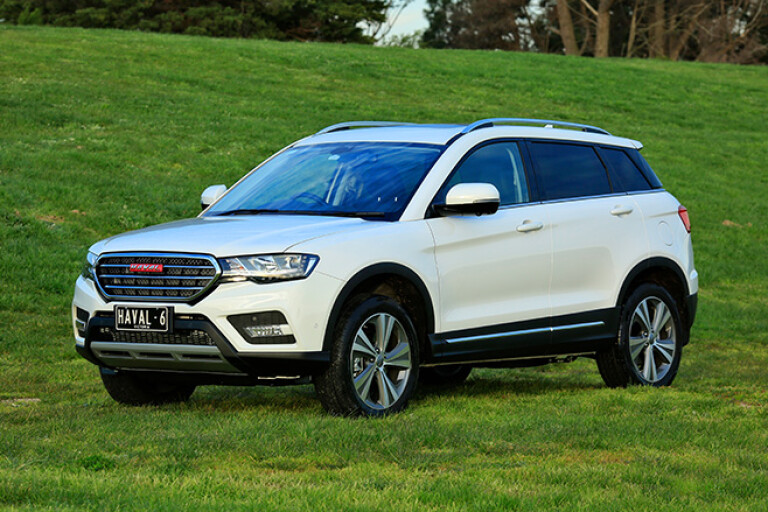
TELL ME ABOUT THIS CAR
The Haval H6 is the fourth model in less than a year to join the growing showroom for the Great Wall Motors-owned premium brand. With swept, coupe-style looks and a rorty turbocharged engine, it’s billed as the sportiest car yet to wear the Haval badge. The Australian arm is keen for this car to do well – it’s the biggest seller in its class in China, and the fifth-largest seller in its class globally. Can it do the same here?
STRENGTHS
- It’s cheap for the amount of gear you get. Haval has priced the entry-level H6 Premium at $31,990 (rivals are priced from here from all the way up to $34K), while the premium-plus H6 LUX is priced from $34,990 (compare that with a $37K-plus benchmark for similarly-kitted rivals).
- The engine is quite good. The 2.0-litre turbocharged four-cylinder powerplant produces 145kW and 315Nm, which gives it plenty of poke compared with classmates. That 315Nm torque figure, though, arrives quite high up in the rev range, which means you best have a few revs on board before overtaking on the freeway.

- Rear-seat space is very good. Haval has sacrificed some boot space to make the rear pews a comfy place for passengers, yielding plenty of legroom and toe room under the front seats. The floor in the back is almost flat, too, so you can easily slide across from the kerb site. If we’re going to be picky, the rear bench is a bit flat and the seatback a bit low, which are the only drawbacks.
- You get a five-year, 100,000 kilometre warranty. This is important for a new brand trying to make inroads into one of the most hotly contested markets in the world, and needing to buy confidence from customers.
- It’s well-equipped on the safety front. You need to dismiss those prejudices of Chinese-made cars cutting corners on safety. This one includes the most important modern safety features such as electronic stability control, and six airbags including side curtain airbags that protect rear-seat occupants’ heads in a side-on crash.
- Haval’s engineers are watching the Australian market with interest. Haval says it will listen to owners’ criticisms of the H6 and use the feedback to improve its products. If there’s something you want improved, tell your dealer.

WEAKNESSES
- Even though the Haval H6 is new to Australia, under the skin it’s an old car. It was launched in China in 2011, and the one we have today is wearing the automotive equivalent of a lot of makeup.
- The price and performance of the engine may be class-leading, but you’ll notice it lacks a lot of the modern safety being built into rivals. Things such as automatic city braking, and lane diversion warnings that sound an alarm if you stray out of your bit of road aren’t available at any price.
- Some things are lost in translation. There’s no satellite navigation system, so buy a smartphone holder to stick on the window. The car’s electronic brains also flick on the hazard lights if you tip into a corner with a bit too much enthusiasm – Chinese drivers move much slower than us, apparently, so the threshold for the warning system is too low. A fix is on the way. Oh, and blind spot monitoring was an always-on feature for the Chinese market. Here’ we have to switch it on.
- Driveaway pricing for the Haval H6 is lower than the recommended retail price, which will hurt resale value. RRP – the price before on-road costs are added on – for the H6 is $31,990, but for a honeymoon period until the end of the year you can pick one up for just $29,990. That there is a circa $3000 price drop (once add-ons are added on) as soon as you drive out the showroom door.

ANY RIVALS I SHOULD CONSIDER?
Do you treat your car like whitegoods, or an asset? If it’s the former, you’re going to struggle to get better value for money. If it’s the latter, you’ll be looking at something like an entry-level Mazda CX-5, Nissan X-Trail, Honda CR-V or even a Hyundai Tucson. They won’t be as richly equipped down this end of the market, but they aren’t as much of a gamble when it comes time to trade it in for something newer.
COMMENTS